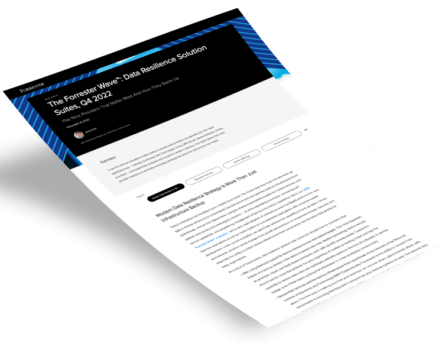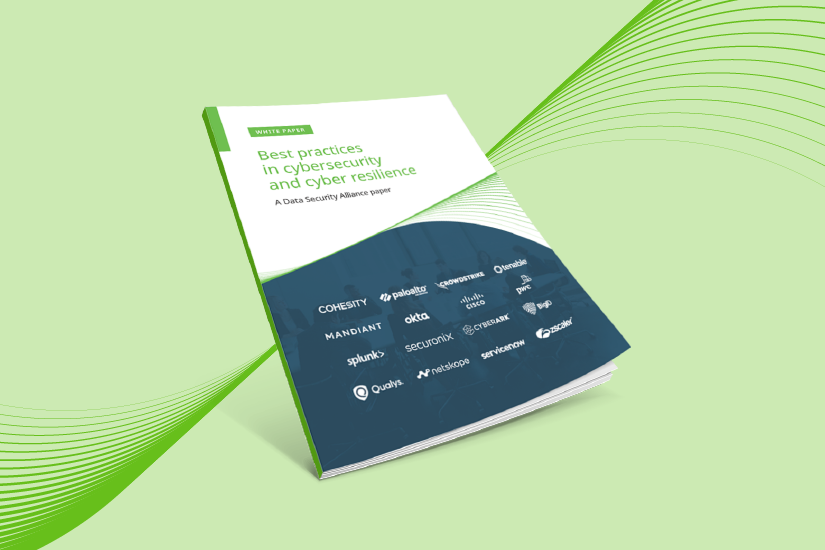Data resilience refers to an organization, system, or network’s ability to maintain or quickly recover data availability, accessibility, and integrity in unexpected events or disasters. This strategy involves establishing the ability to recover from or adjust easily to a disruption.
Multiple strategies can be employed to enhance data resilience—empowering teams to protect, recover, and maintain data availability and security in the face of adverse events such as systems failures, natural disasters, power outages, or cyberattacks.
Why is data resilience important?
Data is the cornerstone of every business process, enabling companies to drive profitability and stay ahead of the competition. Data resilience is important because it underpins the core functions of the business, from decision-making to customer service, while also safeguarding against potential risks and challenges that could impact the organization’s success and reputation. For optimal operation, organizations need their data to be secure and readily available to service their customers without interruption. Effectively managing your data resilience leads to business success. Mismanaging it or losing it can cause organizations to face customer loyalty and compliance challenges.
The concept and practice of data resilience addresses two critical business priorities: business continuity and cyber resilience.
Ensuring secure, non-stop access to data for business continuity is imperative in the digital world, where organizations need to operate 24/7 in service of customers, employees, and partners. At the same time, an organization’s systems and data are quite likely to be affected by natural disasters, human error, and ransomware attacks. When an organization fails to ensure effective data resilience, it is at risk of data loss, data corruption, and unauthorized access that can compromise its reputation, revenue, and viability.
Data resilience strategies, solutions, and processes make it possible to not only respond to potential downtime acts and cyber threats but to survive them. Organizations following best practices in these areas can prevent both accidental and intentional business-disrupting events as well as minimize breach intrusions should they occur. For example, organizations that prioritize data resilience planning better anticipate and respond to market dynamics using emerging technologies such as AI-powered insights to reduce the effects of ransomware. By being proactive, they better capitalize on new opportunities, remain competitive, and drive growth.
What factors affect data resilience?
Both external and internal factors affect data resilience. Externally, the primary influences include increasing natural disasters, power outages and cyber threats.
Internal factors include:
- Growing volumes of data managed across siloed systems.
- Handling of tasks including data backup and recovery, which is the process of duplicating and storing data securely and restoring it should the original be lost or damaged. While backup focuses on maximizing a recovery point objective (RPO), recovery aims to minimize a recovery time objective (RTO). RPO indicates the acceptable amount of data loss during a disruption, based on the frequency of data backups or replication. Since RTO measures the time for systems, processes, or operations to recover after a disruption, the lower the RTO, the better.
- Disaster recovery (DR) planning is the process of putting in place a plan for restoring access to applications and data, along with IT infrastructure functionality after a disruptive event.
- Lack of internal security protocols. Managing administrative credentials and securing the ability to make unilateral decisions are risks that organizations need to address to avoid the effects of human error or a disgruntled employee.
An external factor as well as failure to adequately address internal factors can disrupt the ability of an organization’s systems to process business data. Likewise, a successful cyberattack could result in sensitive or confidential data being compromised.
What’s the biggest threat to data resilience?
Lack of preparedness to deal with disruptions—both those caused by external factors such as power outages and cyberattacks as well as those sparked by internal changes such as human error during system patching—is the biggest threat to data resiliency. Although no organization can prevent every mishap or outside threat from occurring, every organization needs a strategy that prepares them for potential disruptive scenarios, including how to best respond and recover from them.
What is the difference between data resilience vs cyber resilience?
The most successful organizations in the digital era focus on three types of resilience:
- Business resilience — Responding to and adapting rapidly to disruptions or major changes that put their operations, people, corporate assets, reputation, brand, or revenue at risk
- Data resilience — Ensuring data availability, integrity, and accessibility in spite of unanticipated events, disruptions, or failures
- Cyber resilience — Withstanding and recovering quickly from cyberattacks
Though these three forms of resiliency are closely related, data resilience is foundational to both business resilience and cyber resilience. While cyber resilience focuses primarily on recovering from and operating despite cyberattacks, data resilience is about doing the same in the face of any disruption, whether caused by ransomware, a natural disaster, human error, or other catalyst. As such, a robust data resilience strategy is part of an effective cyber resilience strategy.
Cohesity and data resilience
As organizations of all sizes and industries manage more data in multiple workloads, on-prem, multicloud, and edge deployments, and interact with more third parties than ever before, they must contend with ever-evolving cyber threats that can threaten data resilience.
To better safeguard their sensitive information, organizations are moving to modern data security and data management platforms that reduce operational risk. Solutions such as Cohesity Data Cloud feature Zero Trust data security, AI-powered anomaly detection and insights, and other data resiliency capabilities to support the wide range of workloads common in large enterprises today.
To progress on your data resiliency journey, Cohesity recommends this step-by-step plan of action:
- Determine desired outcomes for data resilience, such as levels of RPOs and RTOs.
- Prioritize desired workloads and use cases for data resilience in a roadmap.
- Compare the ROI and TCO of a modern data platform to your current solution, with a focus on data protection efficiency, operational efficiency, and risk and compliance.
- Select and deploy your chosen solution, then execute the roadmap from the prior step.










